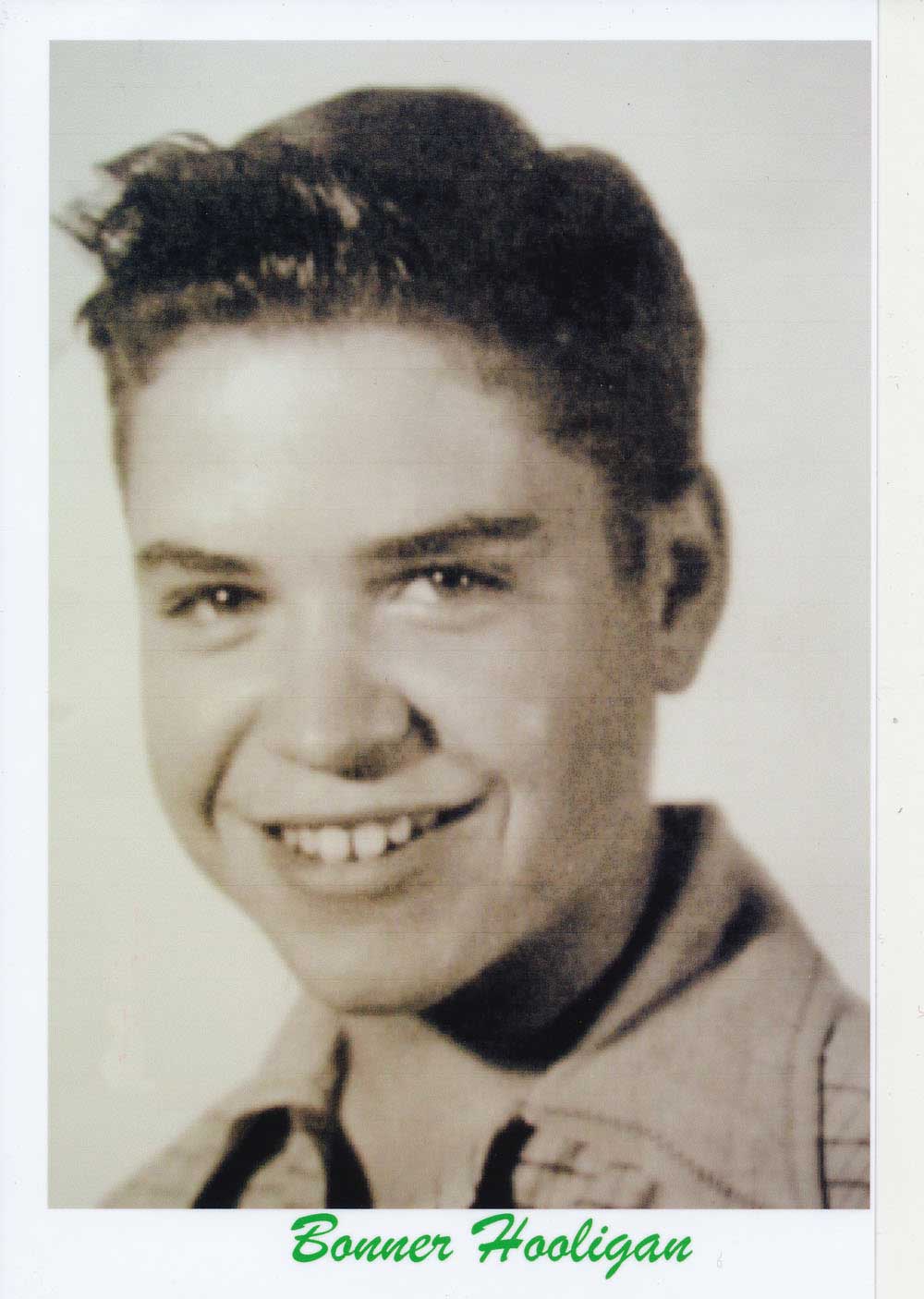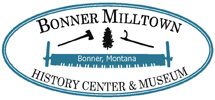 In 2017, Mrs. Torri Dayley's fourth graders visited the History Center triggering these memories from the Bonner Hooligan, Glenn Max Smith. Helping with the field trip were Jimmie Willis and Dennis Sain.
In 2017, Mrs. Torri Dayley's fourth graders visited the History Center triggering these memories from the Bonner Hooligan, Glenn Max Smith. Helping with the field trip were Jimmie Willis and Dennis Sain.
What if you could down shift the mind of an "Old Geezer" fourth grader from 1954, and cruise with the minds of fourth graders from 2013? An interesting concept, I thought, as I prepared for a field trip with Mrs. Dayley's fourth grade class. After all, Bonner School is the home of the "Lumberjacks" and in my day, tall tales of Paul Bunyan and his faithful blue ox Babe were almost believable. Hang on now, and imagine, if you can, the Fourth Grade of Miss. Hazel Splan leaving the west entrance of a large two story gray school house in 1954, and waiting for the Fourth Grade class of Mrs. Dayley from the red brick school house of today. Together both classes will walk to the Bonner Milltown History center and Museum and compare what we see today to that of what was. I'll start my story about how I came to live in Bonner and what I experienced at that time.
My first memory of Bonner actually began in the late 1940's when I moved here from Anaconda, Montana. My step dad worked for the Milwaukee Railroad and was checking on a job position as a steam locomotive maintenance man for a Class C oil fired steam locomotive #1246. This old steam engine was used to haul logs into the Bonner mill from the surrounding forests and log landings.
The road trip from Anaconda, Montana, to Bonner was a grueling trip on a narrow winding highway with an average speed of less than 40 MPH. One of my life's most amazing memories was when we finally reached the Bonner turnoff and started our drive into the Bonner town site. My early childhood was spent in the Anaconda area where the huge Anaconda Company Copper Mining smelter literally destroyed most of the living green vegetation. In some places it looked as if you were living on the moon. The first thing to catch my senses and attention at the Bonner turnoff was two small white churches followed by a huge gray multi-floor school house. Much later, I would learn that there was an earlier school house which was also known as the Masonic Lodge and Bonner Hall. The red brick school house had not been built yet. My sense of smell was captured next by the aroma of fresh sawed pine lumber which was stacked in huge piles for air drying in an area directly across highway 200 from the present day Bonner school.
The next amazing sight I saw was a regulation size baseball field and spectator stand built for Bonner's two baseball teams, the Bonner Lumberjacks and the Bonner Highlanders. Today a more modern spectator stand has replaced the original. The best baseball game I ever saw played there was a game called Donkey Baseball. It was played like regular baseball with one exception. When you made a hit, you were required to jump up on the back of your assigned donkey and run the bases. By the end of the game, the ball players and spectators were rolling on the ground with laughter. I never did figure out how well the Donkeys liked the game.
The next striking sight I saw was rows of meticulously maintained family dwellings surrounded by magnificent shade trees of birch and maple. Green lawns were in abundance and everything was connected by quaint wooden board sidewalks. Just when I thought I had seen everything, an amazing castle-like building came into view. It was the Hotel Margaret, named after an early Bonner School teacher, Margaret Robinson. For a modest price, mill workers could purchase a hot home style lunch, served in the ornate dining room. Some of the best cookies I ever tasted, with the exception of Jim Willis's and my wife Sharon's, were made in the kitchen of this marvelous hotel.
The next point of interest in this quaint little sawmill town was the white building that is currently home to our History Center. A delightful little soda fountain occupied the area where our History Center now sits, and a small grocery store, named the Red & White Store which was operated by Albert Dufresne occupied the center part of this structure. The Bonner Post Office sat on the south end of the grocery store.
Many more mill workers' houses occupied both sides of Highway 200 up to the Milwaukee Railroad crossing. The Victory Gardens were tucked in slightly east of the sawmill. These gardens were maintained by the Anaconda Company and divided up into plots which were rented by mill workers and other locals. As you neared the railroad crossing you could detect the strong odor of bunker crude oil and hot steam. The Milwaukee Railroad had their Bonner Maintenance Shops located here, and bunker crude oil was used to fire the boilers on the mighty old steam engine#1246.
After settling into our railroad house, the following Monday morning startled us with a blast of a mighty steam whistle, which could easily rival the whistle on the H.M.S. Titanic. It was 8:00 am and this was a signal to the mill workers to begin work. This huge whistle would signal the start and end of the lunch hour as well as the end of the day shift, at 5:00 pm. Just when everything quieted down this giant steam whistle would once again signal the start of the night shift at 6:00 pm.
While growing up and attending school in Bonner, I had the privilege of going on several field trips through this enormous saw mill. The department supervisors would slow down the production processes so we could observe every detail about how logs were converted into lumber. In order to further simplify these trips, cat walks and observation points were built for us as we made our tours. These trips were fascinating to me personally and inspired me to work here for 45 years.
Regretfully, you cannot actually experience the sights and sounds of 1954 as this grand old sawmill has been shut down and decommissioned. All is not lost, however, as I have joined the ranks of some very good friends who have devoted themselves to preserving the memories of the mill at Bonner through pictures, stories, and movies. Our History Center is one way for us to share some of these adventures and we encourage everyone to return for many more stories and a great window to view our past.
Thank you, Jim Willis and Dennis Sain for helping me spin this story.











